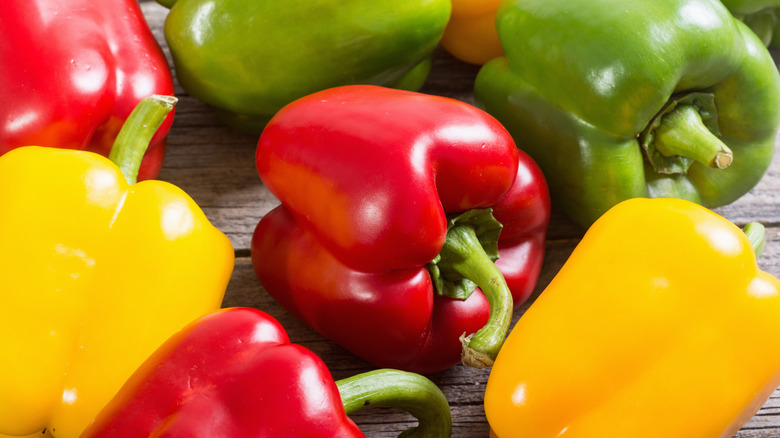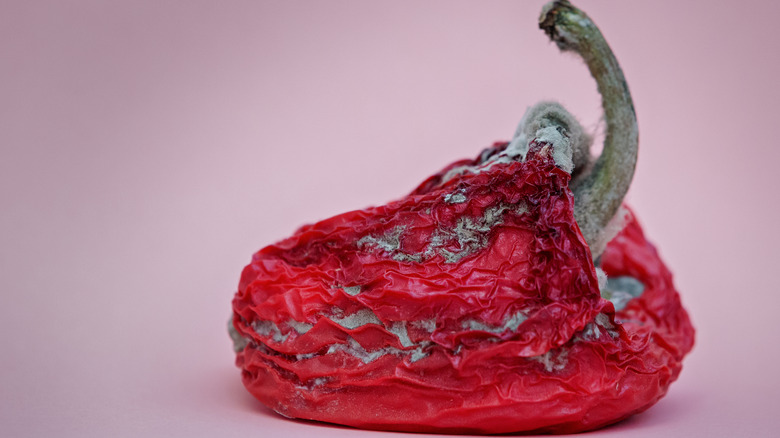The Easiest Way To Tell If Bell Peppers Have Gone Bad
A fridge full of bad bell peppers — it happens to the best of us. Sometimes the look of a vibrant pepper will prompt us to pick up one too many from the market, and before you know it they're wasting away. But just because they've been sitting in the fridge for a while, that doesn't always mean they should be tossed. There's a way to tell if bell peppers have gone bad, and it's actually pretty simple.
Available in a rainbow of shades, Cook's Country states that all bell peppers start out green before ripening and turning yellow, orange, red, or purple. While their delicate flavors evolve from herbaceous and grassy to sweet and fruity, peppers can often be used interchangeably in any recipe from salad to stir-fry to soup and beyond.
However, starting with fresh produce is the best way to minimize any spoilage. The best bell peppers should be firm with glossy, blemish-free skins, and if you pick up two bell peppers of the same size and they look the same, go with the one that feels heavier. Once you take peppers home, proper storage is important. Although they'll last on the countertop for a few days, MasterClass recommends placing the peppers in a slightly opened plastic bag and storing them in the crisper drawer. The one downside of the crisper drawer is you may forget about the peppers, but how do you know if they have truly gone bad?
Wrinkly brown spots are the first warning sign
With the passage of time, the shelf life of bell peppers will inevitably start to diminish. Nature Fresh explains that raw bell peppers will still be viable after sitting in the fridge for one to two weeks, but once you get past that point, things get sketchy. According to Reader's Digest, you can tell that bell peppers have started to pass their prime when they have soft or "wrinkly brown spots." This is an indication that the peppers have lost some of their moisture and consequent crunch but doesn't necessarily mean that they're destined for the trash can.
Even though a shriveled appearance isn't the most aesthetically pleasing, Eating Well confirms that a wrinkly pepper can still be used in cooked recipes — unless it is moldy or smells bad. If the entire pepper is moldy, then throw it out, but if there is just one moldy spot, there's a solution. The FDA explains that any firm fruits and vegetables (like bell peppers) have a low moisture content, which means they can still be eaten as long as you cut at least 1 inch around the moldy spot. The best way to avoid dissecting moldy peppers or throwing them away, however, is to have a recipe in mind when you buy them, like this stuffed pepper skillet or hearty red pepper soup.

